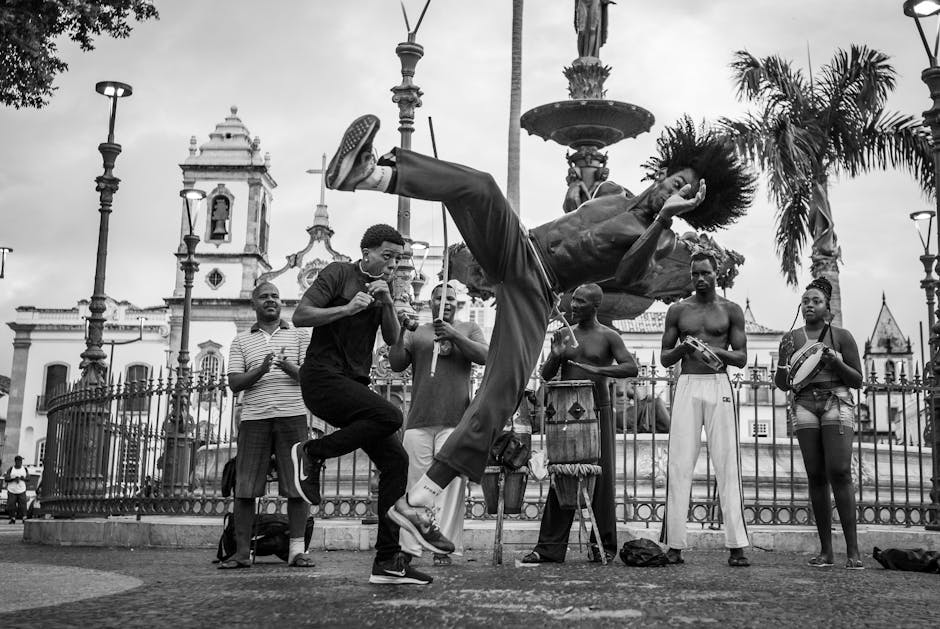Understanding the Essence of Carnival
Carnival in Rio de Janeiro is not merely a festival; it is a vibrant expression of Brazilian culture deeply rooted in history. The origins of this iconic celebration can be traced back to the early 18th century, influenced by European traditions, particularly the Portuguese and their pre-Lenten celebrations. Over the years, Carnival has evolved into a dynamic event that showcases Brazil’s rich cultural diversity and artistic creativity.
Carnival transforms the city into a colorful mosaic, where samba music, elaborate costumes, and bold performances come together to create an unparalleled atmosphere. The festival typically takes place over a week leading up to Lent, attracting millions of visitors and locals alike, all eager to participate in the festivities. One of the defining features of Carnival is the samba parade, held at the Sambadrome, where samba schools compete through impressive floats, intricate choreography, and stunning costumes. Each samba school tells a story, often drawing from Afro-Brazilian history, folklore, and contemporary issues, revealing the profound narratives that underpin the carnival’s performances.
Beyond the grand parades, Carnival encompasses a multitude of street parties, known as “blocos,” which emerge throughout the city. These informal gatherings invite people of all ages and backgrounds to revel in the infectious rhythm of samba music, promoting a sense of community and shared joy. The cultural significance of Carnival extends beyond entertainment; it plays a crucial role in promoting local artisans, musicians, and performers, thereby contributing to the economy and social fabric of the local community.
Through its unique traditions, Carnival fosters a spirit of unity and resilience among Brazilians, making it a powerful symbol of the country’s identity. The essence of Carnival in Rio de Janeiro lies not only in its visual splendor but also in its ability to evoke a sense of pride and belonging, reflecting the heart of Brazil’s cultural landscape.
Planning Your Carnival Experience
Preparing for a Carnival experience in Rio de Janeiro requires careful planning and consideration. The first step in this process is choosing the right dates. Carnival typically occurs in February or early March, aligning with the Catholic tradition of Lent. Identifying the dates of the main events, including the Sambadrome parades, which usually take place on the weekend preceding Ash Wednesday, is essential for maximizing your experience.
Accommodations during Carnival can fill up quickly, so it is advisable to book your lodging well in advance. Consider various options, from hotels to hostels and rental apartments, to suit your budget. Opt for accommodations located close to the primary parade sites or popular bloco routes to minimize travel time during the festivities. Early reservations may also yield better rates, as prices tend to rise closer to the event.
Understanding the diverse array of events and parties is crucial when planning your itinerary. While the grand parades at the Sambadrome are a spectacle not to be missed, the smaller street parties, known as blocos, are equally vital to the Carnival experience. These informal gatherings draw thousands of participants and often provide an authentic glimpse into local culture and traditions. It is recommended to research different blocos, as each offers unique themes, music, and atmospheres.
Creating a comprehensive itinerary can help ensure that you fully enjoy both the major parades and the various street parties. Popular apps and websites dedicated to the Carnival experience can offer real-time updates on specific events, user reviews, and maps. Utilizing these resources will facilitate navigation through the bustling city streets during the celebrations. By planning effectively, you can have a rewarding and immersive experience at one of the world’s most vibrant festivals.
Packing Essentials for Carnival
Preparing for Carnival in Rio de Janeiro requires careful consideration of what to pack, particularly due to the event’s vibrant atmosphere and the hot and humid weather typical of the region. First and foremost, clothing should be lightweight and breathable. Opt for materials like cotton or linen, which will keep you comfortable as you revel in the festivities. Bright colors and fun patterns are encouraged, as they align with the joyful spirit of Carnival. Many participants choose to wear costumes, ranging from elaborate samba outfits to creative DIY ensembles that reflect their personality and imagination. Accessories like masks and feathers can also add to the festive look while keeping in line with the traditional Carnival theme.
It is essential to prioritize safety and convenience while packing. Essential items include sunscreen, which is crucial to protect your skin from the intense sun exposure. A portable charger is also advisable, ensuring your phone remains powered for taking pictures and staying connected with friends. Additionally, bring a reusable water bottle to stay hydrated throughout the day. Mental readiness for the heat is equally important; therefore, consider packing a hat and sunglasses to provide extra protection against the sun.
When attending outdoor events, practical footwear is paramount. Comfortable sandals or sneakers are ideal, allowing you to dance and walk freely without discomfort. Meanwhile, a small, crossbody bag can hold your essentials, including identification, money, and any personal belongings, providing both security and convenience as you navigate through crowds. Consider what will balance style with practicality. Ultimately, an effective packing strategy will greatly enhance your experience at Carnival in Rio de Janeiro, allowing you to focus on celebration and enjoyment.
Safety Tips and Cultural Etiquette
Preparing for Carnival in Rio de Janeiro involves not only excitement and celebration but also a keen awareness of safety and cultural etiquette. As festivities attract large crowds, it is crucial to prioritize personal safety. First and foremost, it is advisable to stay in well-populated areas and avoid wandering into isolated neighborhoods, particularly at night. Utilizing registered taxis or rideshare apps ensures a safer means of transportation, while traveling in groups enhances security.
It is prudent to limit the amount of cash and valuables carried during the festivities. Opt for money belts or concealed bags to protect essential items. Always remain vigilant and be mindful of surroundings, particularly in crowded environments where pickpockets may be present. Additionally, familiarizing oneself with emergency contact numbers and nearby medical facilities can further enhance safety.
Equally important is understanding the cultural etiquette that enriches the Carnival experience. The celebration is deeply rooted in Brazilian culture, and displaying respect towards the local customs is paramount. Engaging with locals in a friendly manner can lead to unique cultural exchanges. When participating in samba parades or blocos, it is essential to be respectful of the performers and the traditions being showcased. Observing and adhering to the specific rules of each samba school enhances participation while honoring the hard work of the dancers and musicians.
Moreover, showing appreciation for Brazilian culture through education can substantially elevate your Carnival experience. Learning phrases in Portuguese can foster goodwill and show respect for the language. Understanding the symbolism of costumes and the significance of various samba schools also deepens appreciation. By following these safety tips and cultural guidelines, revelers can fully enjoy the Carnival experience while contributing positively to the community in Rio de Janeiro.





